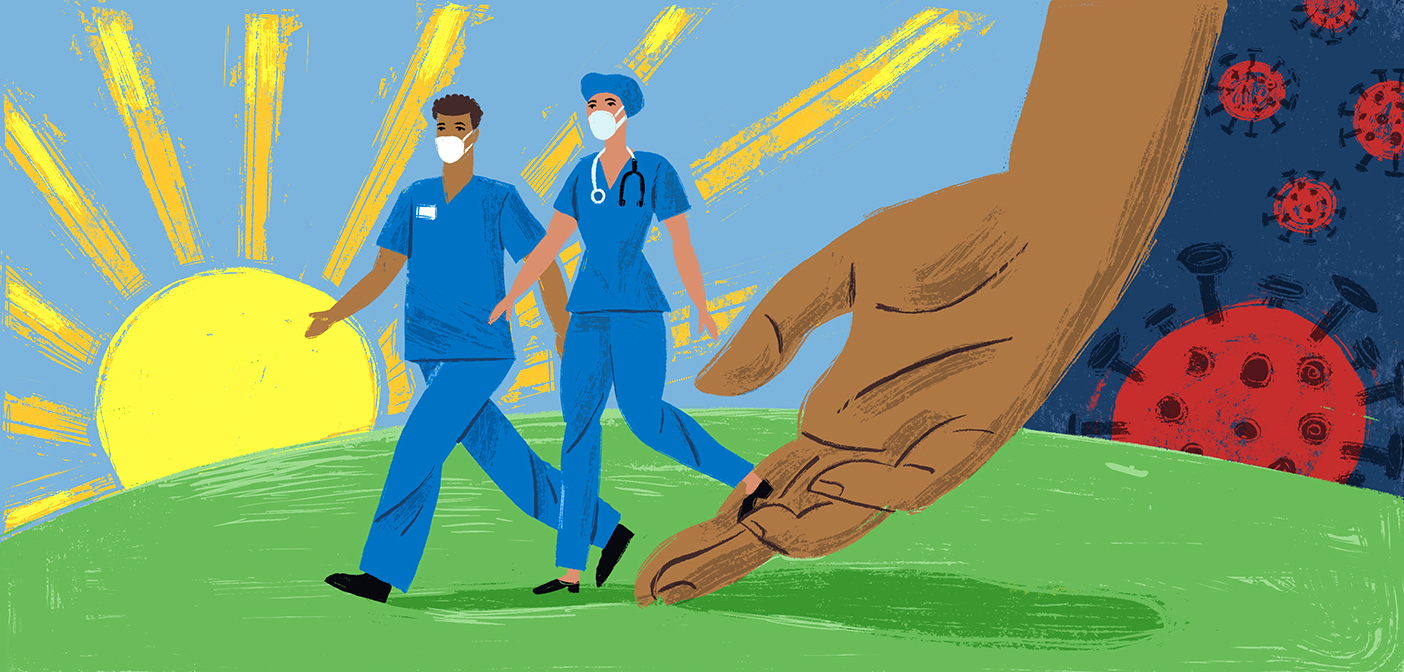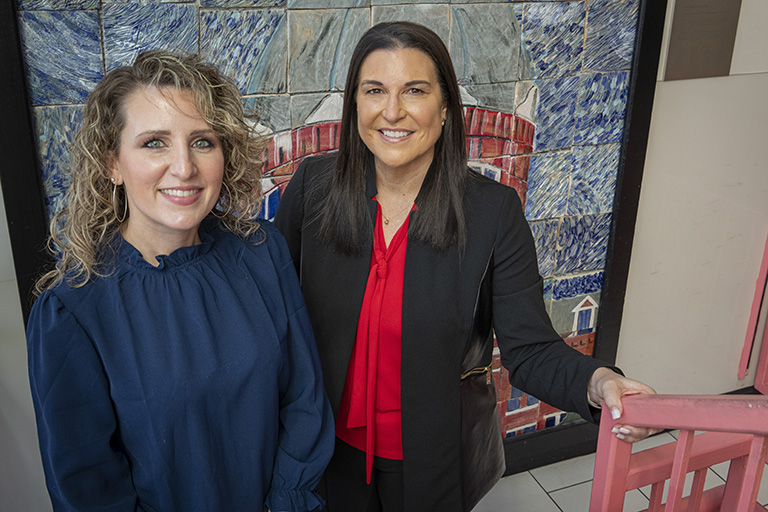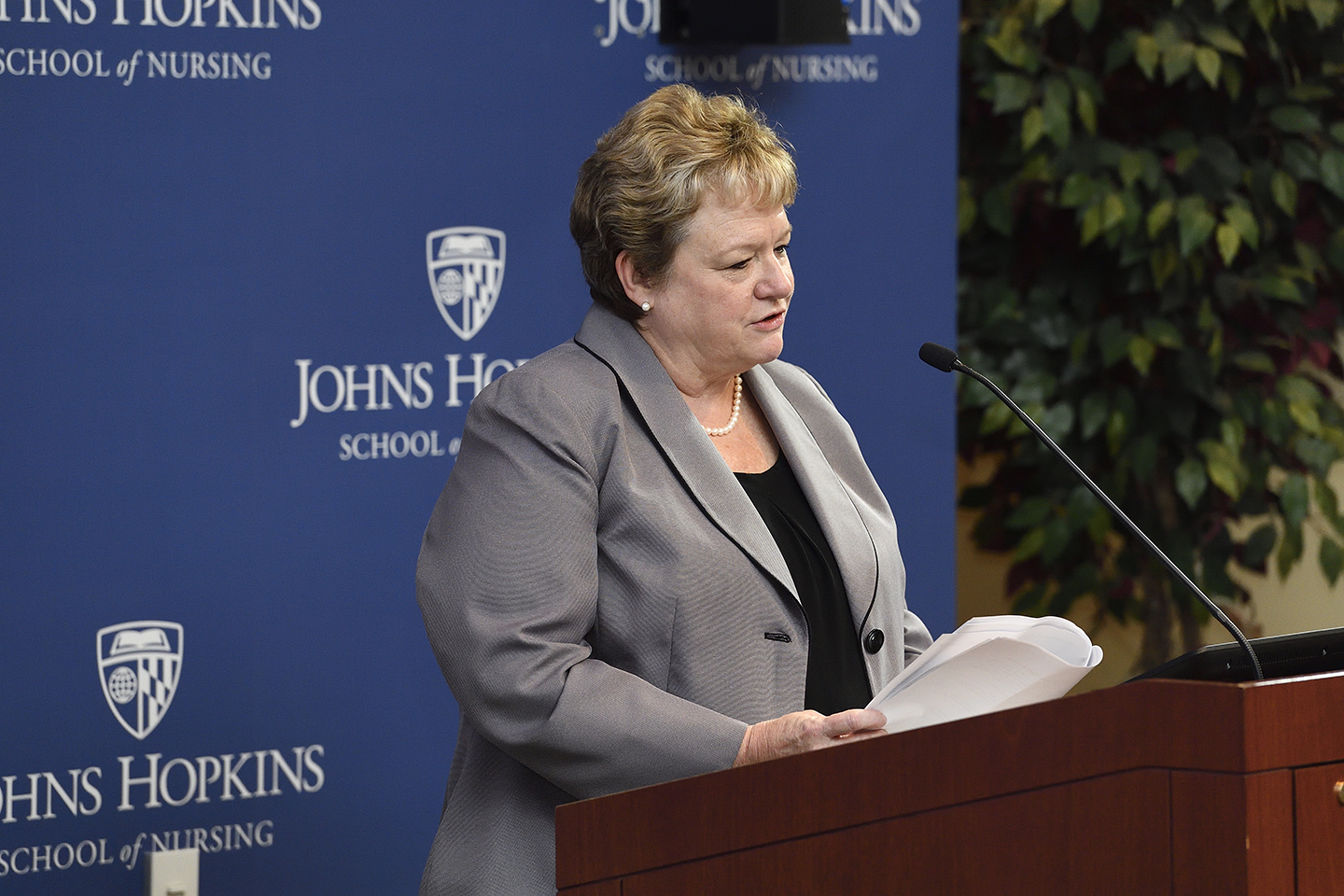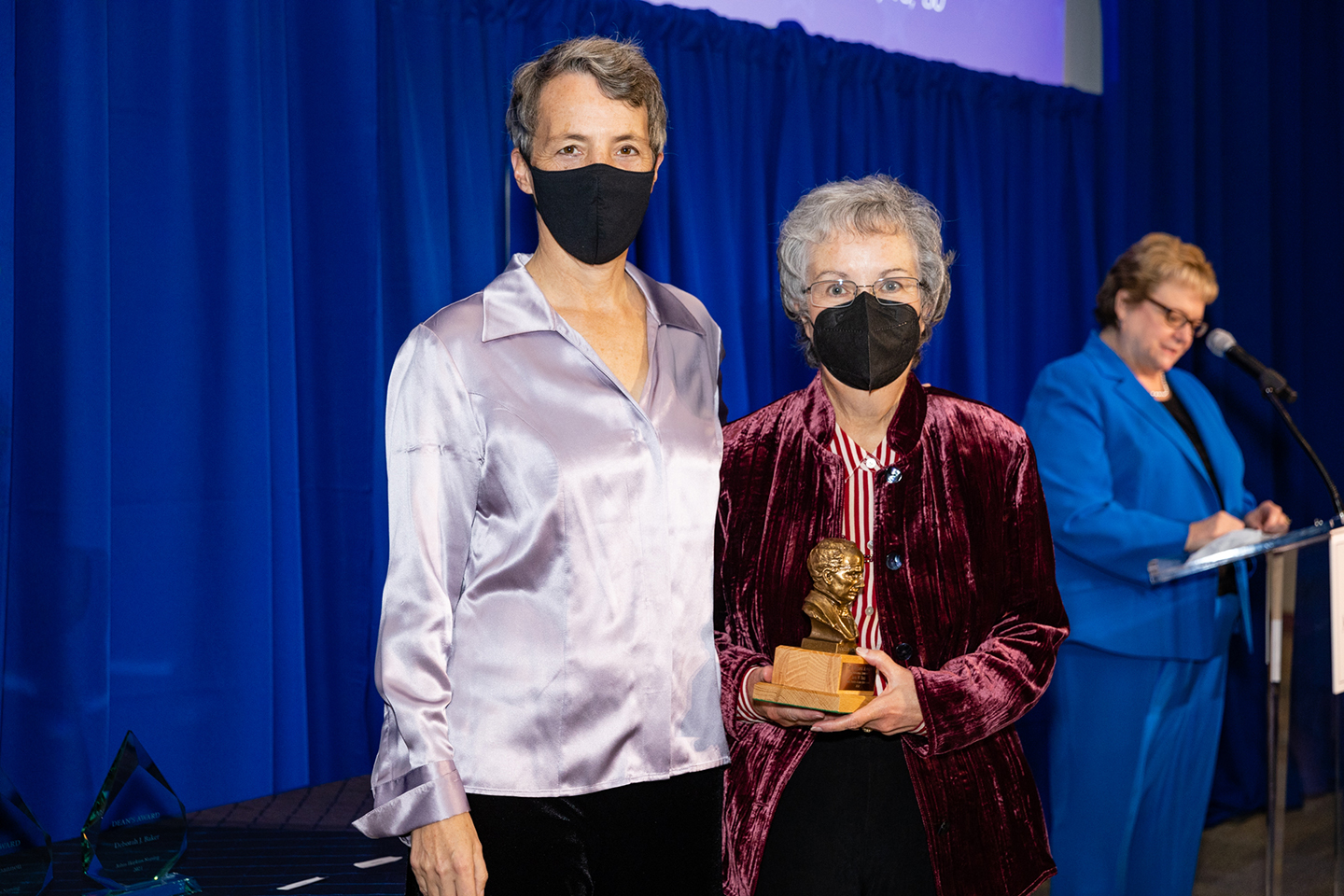In January, 2020 began as the “Year of the Nurse and Midwife.”
Little did we know that COVID-19 would come next.
Worldwide, chaos descended as nations were unevenly impacted by the virus and resulting economic downturns. The nursing shortage became a tight pinch. And hospitals and “health care heroes” stepped into the spotlight.
In a moment of crisis, communities looked toward strong leaders with an unwavering commitment to evidence-based practice. One of them is Deborah Baker, DNP, RN, ACNP, NEA-BC, who leads the Registered Nurses of the Johns Hopkins Health System as the Senior Vice President for Nursing and the Vice President for Nursing and Patient Care Services at Johns Hopkins Hospital. Dr. Baker also serves as the Associate Dean for Health Systems Partnership and Innovation at Johns Hopkins School of Nursing.
In this short Q&A, Dr. Baker talks about how Johns Hopkins nurses rose to the challenge of a pandemic.
When you knew COVID-19 was coming, how did nursing at JHHS prepare? What systems did you already have in place that served you well and what new systems did you set up?
Pandemic planning is part of organizational disaster planning, so we have long had an evidence-based strategy in place if something like COVID-19 were to occur. By December 2019 we knew that COVID-19 would really impact us, that we would see patients, and the theoretical plans we had in place became real. As the subject matter experts, our infection control leaders united with our office of emergency management to lead planning and strategy meetings in our unified command center. We expanded procedures we have in place during flu season on oncology and pediatrics units to control the spread of coronavirus, including proper protocols for donning and doffing protective equipment, restrictions on visitation, and installing safety officers to ensure that rules are being followed.
The demand for critical care was high and our Hopkins nurses stepped up. For example, surgical procedures were cancelled and those nurses went to support inpatient units and employee health and “go teams” assisted nursing homes in responding to COVID-19.
We learned a lot in this first wave and want to learn more from our staff. We are planning focus group to learn from ow we can do this better if there is a second wave. Our nurses have great ideas to fill in the gaps and improve the process.
What do you think was the biggest success in your pandemic response?
Without a doubt, that would be the teamwork of all disciplines coordinated by the Johns Hopkins Medicine Incident Command Team of which nursing plays a large part—as part of the JHM Unified Command and at ACH affiliate command.
The nursing shortage is not new, but amidst COVID-19 it became critical. How did JHHS supplement its health care provider workforce?
Like many hospitals, we faced a shortage of critical care nurses to meet surge volumes. But thankfully our nursing team is strong and we hired many new nurses, as we do every summer as new nurses complete their studies. Knowing the potential for a surge in cases in coming months, we will continue our efforts to recruit experienced nurses for our ICUs and continue to train interested nurses in critical care and welcome our NP and CRNA colleagues to assist in providing bedside critical care.
This cross-training is now in place across the Johns Hopkins Health System. And it’s something that will remain, even as we think about professional development for our new hires we are grateful for the creativity and organizational skills of our, educators, clinical nurse specialists and nursing leaders in providing ongoing training.
Right now, many states and schools are open, we do not have a vaccine, and we’re faced with the possibility of a fall surge. How is JHHS preparing for it?
When the COVID-19 pandemic broke out, we shut down certain parts of the hospital so we could treat COVID patients and contain the virus as much as possible. For example, some outpatient clinics and elective surgical centers were temporarily closed.
This time we are really focused on being able to treat COVID patients without having to shut down other areas of our hospitals. We want to maintain full capacity to provide emergency care and treat patients with chronic conditions. So we will continue to observe safety protocols and build our capacity to treat all patients who need care. That means we will have to continue precautions like visitor restrictions, which is hard for our patients and their loved ones. We will always put safety first and work with our social work and patient experience colleagues to assist with communication with our patients and families
What are the key indicators that we have entered a new surge?
It is a mistake to look only at COVID cases. We also monitor all hospitalizations, ICU usage rates, and the acuity—all indicators of a spike. We even look at data from patient, staff and visitor screening data which can indicate when we need to add or redirect our resources.
Who have been the unsung heroes of Johns Hopkins’ COVID response?
It’s hard to single out any particular team because we have all really come together. Of course I have a bias with nursing and the many novel roles they assumed, but I have also never thought about the importance of the air flow in our buildings this much in my life! Our architects and facilities specialists are incredible! Pre-pandemic, when we set to work designing our new construction and renovation, I didn’t understand fully the need to spend money on negative airflow, but they were right and it’s been so important to our ability to respond. We are all grateful for their hard work and expertise.
We were fortunate to have recently completed construction designed for negative airflow – a controlled current of air that helps remove droplets that could spread COVID-19. With more units designed for negative airflow, we could treat patients in different floors of the hospital instead of putting all the burden on a single unit.
You were the first speaker for the Reflections of a CNO lecture series. Who’s next?
LeighAnn Sidone is next. She’s the CNO of Suburban Hospital (a hospital within the Johns Hopkins Health System). Amid the COVID-19 pandemic, she has had the most amount of COVID cases proportionate to hospital size, and did an amazing job. So amazing that she was named the interim hospital president when president Jacky Schultz, RN, MSN, CNAA stepped down.
Read more:
- Deborah Baker: A Leader During COVID-19
- A Letter from Deb Baker
- Deb Baker: We Got This Nursing Administration
ABOUT THE AUTHOR: SYDNEE LOGAN

Sydnee Logan, MA is the Sr. Social Media and Digital Content Specialist for Johns Hopkins School of Nursing. She connects Hopkins Nurses with the world.

 COVID and Nursing: Where to from Here?
COVID and Nursing: Where to from Here? Help on Diabetes in Schools
Help on Diabetes in Schools A Letter from Deb Baker: Sharing Our Voices, Influencing Change
A Letter from Deb Baker: Sharing Our Voices, Influencing Change COVID-19: Parents Breathe Next Sigh of Relief
COVID-19: Parents Breathe Next Sigh of Relief Alumni Update Spring 2022
Alumni Update Spring 2022







